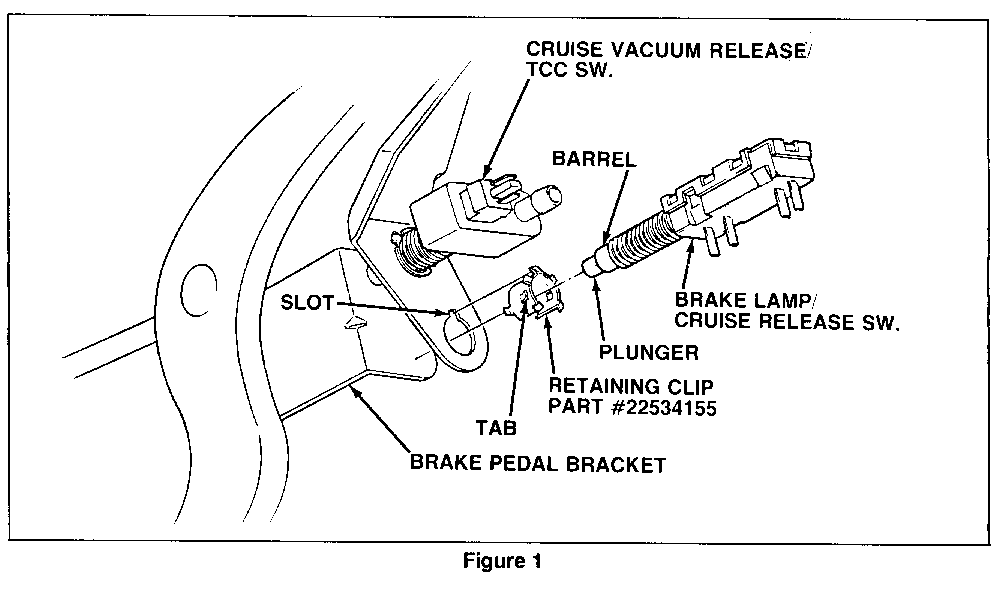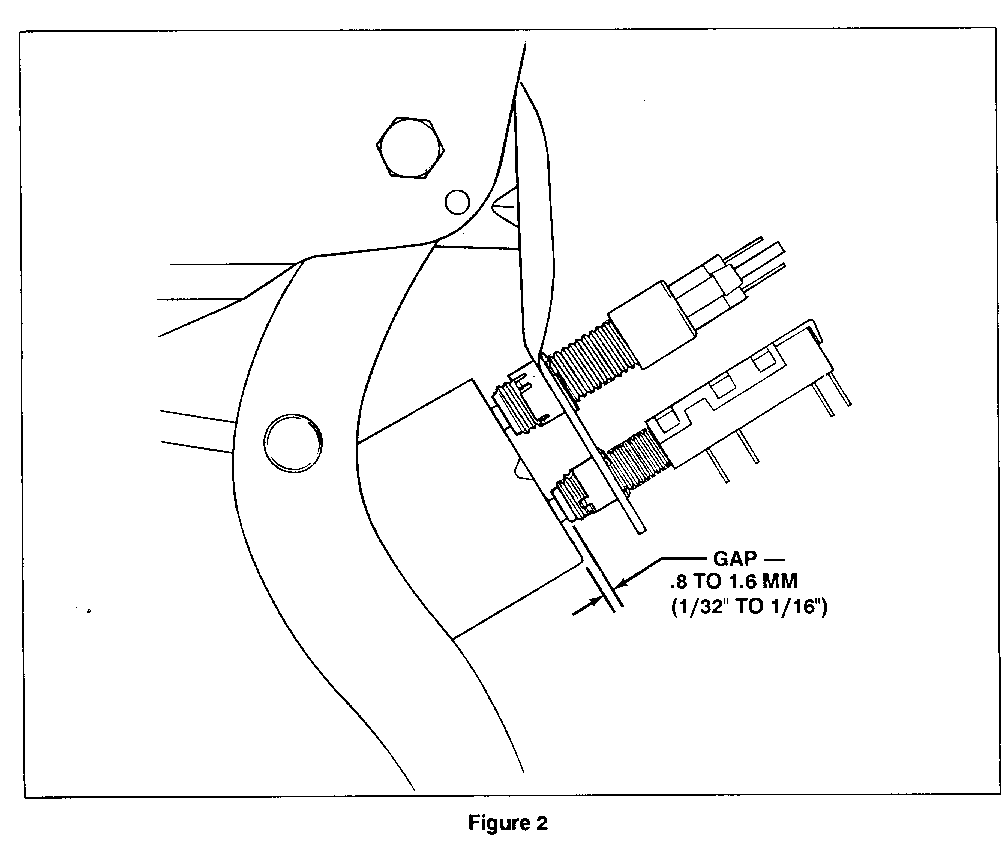FRONT BRAKE DRAG ADJUST BRAKE OR CRUISE SWITCH

Models Affected: 1989 6000
Condition:
---------- Brake drag at low mileage may be caused by misadjustment of the brake light and/or cruise control switches, which operate off the brake pedal bracket.
Cause:
------ The brake lamp switch may be holding the brake pedal slightly applied. Also, if these switches are misoriented so that thev are touching, they could tilt in the retainer, resulting in a binding condition.
Correction:
---------- 1. The normal adjustment procedure is to pull up on the brake pedal with a force of 60-80 lbs. (260-350 N.). If no "click" is heard, proceed to step #2.
2. Remove the hush panel.
3. Inspect for proper switch and retainer orientation (see Figure 1).
IMPORTANT: A. The switch bodies must not touch each other.
B. The retainer tab must be in the slot on the switch mounting bracket.
4. Adjust the switch position to obtain 1/32" - 1/16" gap between the brake pedal bracket and the barrel of the brake light/cruise switches WITHOUT BENDING the switch mounting bracket (see Figure 2).
Procedure:
A. Pull back existing switch(es) or install new switches until retained with only one "click" or "thread" adjustment.
B. While holding the pedal up in the most rearward position, push the switches into the retainer until the plunger is fully depressed and the threaded barrel of the switch is in contact with the brake pedal bracket. (One method to hold the pedal up, is to wedge a block of wood between the pedal and the floor.)
C. Release the brake pedal and check the brake lamps and cruise control system for proper operation.
D. If the brake lamps remain on with the brake pedal fully released, insert the brake light and cruise switches three (3) additional "clicks" and pull back on the brake pedal with sufficient force to move the switch in its tubular retaining clip to obtain final adjustment.
5. Check the rotor, caliper, and linings for abnormal wear and/or heat damage. See applicable section of Service Manual for proper service procedure as required.
Warranty Information
Labor Operation: T1410
Labor Number : .5 Hour (Add .1 Hour with Locking Covers)


General Motors bulletins are intended for use by professional technicians, not a "do-it-yourselfer". They are written to inform those technicians of conditions that may occur on some vehicles, or to provide information that could assist in the proper service of a vehicle. Properly trained technicians have the equipment, tools, safety instructions and know-how to do a job properly and safely. If a condition is described, do not assume that the bulletin applies to your vehicle, or that your vehicle will have that condition. See a General Motors dealer servicing your brand of General Motors vehicle for information on whether your vehicle may benefit from the information.
